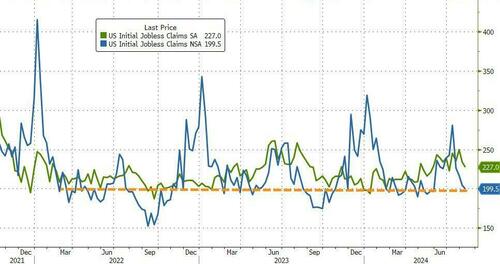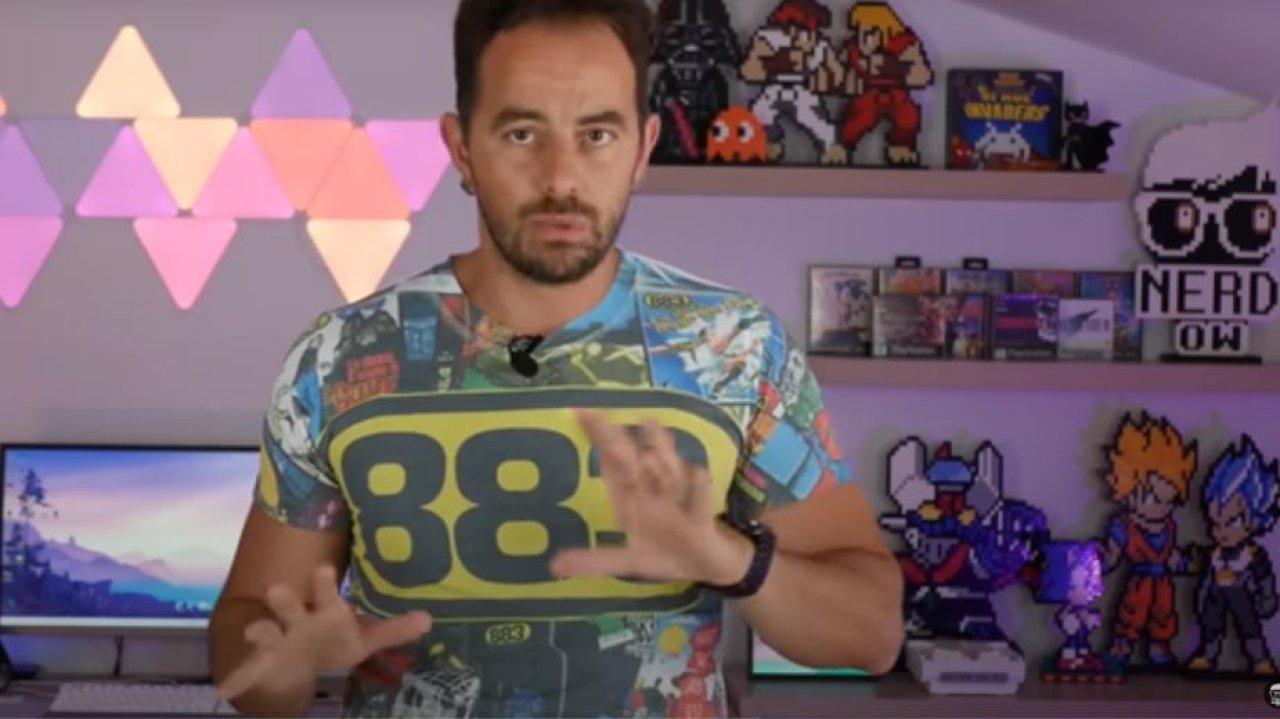
Доверительная игра
Бенджамин Пиктон, старший макростратег в Rabobank
По мере приближения к Симпозиуму в Джексон-Хоул (Jackson Hole Symposium) на этой неделе спикеры ФРС в целом пришли к выводу, что они набирают уверенность в том, что экономика достигает точки, когда ставка ФРС может быть снижена. В интервью Financial Times в пятницу Президент ФРБ Атланты Рафаэль Бостик заявил, что он "открытый«К сокращению ФРС в сентябре и, что критически важно, что ФРС»Нельзя позволить себе опоздать«при проведении политики смягчения».
Комментарии Бостика отражают возникающую дихотомию между показателями инфляции и рынком труда, который демонстрирует явные признаки смягчения. Показатели ИПП и ИПЦ за июль, опубликованные на прошлой неделе, удивили на низкой стороне, помогая сместить основное внимание проблем от постоянного инфляционного давления к рынку труда; где мягкий несельскохозяйственный отчет о заработной плате две недели назад вызвал шоки на рынках.
В последнее время рынки становятся все более чувствительными к данным рынка труда. Вот почему последние две недели первоначальных и продолжающихся заявлений о безработице (обычно рассматриваемых как данные второго уровня) были ключевыми моментами, представляющими интерес, и вызвали значительные ценовые действия при публикации. Эти цифры снова напечатаны на нижней стороне на прошлой неделе, что еще больше успокаивает нервы о том, что рынок труда может столкнуться с крахом, а не с тщательно контролируемой «мягкой посадкой», к которой стремится ФРС.

Тем не менее, Бостик напомнил нам о избитой фразе о том, что денежно-кредитная политика действует с «длинными и переменными задержками» (как на пути вверх, так и на пути вниз). Интуиция здесь заключается в том, что центральные банки должны добавить некоторый подъем в экономику, прежде чем колеса вступят в контакт с асфальтом, смягчая политические ставки, опережая данные, подтверждающие, что экономика фактически достигла целевого уровня инфляции.
Коллеги Бостика по ФРС Аустан Гулсби и Мэри Дейли отправили аналогичные сообщения в выходные о целесообразности смягчения политики. Гулсби указал на сигналы на рынке труда и признаки ухудшения кредитного качества как "Различные ведущие индикаторы рецессии"предполагая, что "Некоторые из них дают предупреждающие огни.". Гулсби отметил (правильно), что когда уровень безработицы начинает быстро расти, его трудно остановить. "Это [уровень безработицы] имеет тенденцию подниматься, как ракета, и опускаться, как перо. "
Мэри Дейли также подверглась сокращениям, но была немного более осмотрительна в отношении риска ухудшения ситуации на рынке труда. В комментарии Financial Times она сказала, что у нее есть "Больше уверенности«о перспективах инфляции и о том, что настало время рассмотреть вопрос о снижении ставки по фондам ФРС». Оценка рынка труда Дейли кажется менее пессимистичной, чем Гулсби или Бостик. Она сказала, что рынок труда смягчается, но это не так".слабыйи что постепенное ослабление денежно-кредитной политики будет "благоразумный".
Итак, что мы должны сделать из всего этого? Что ж, сентябрьское снижение ставки по фондам ФРС, похоже, почти завершено. Внимание рынка теперь обращается к темпам смягчения, конечной точке смягчения и тому, будут ли такие пессимисты рынка труда, как Гулсби и Бостик, успешно настаивать на том, чтобы первое сокращение составляло 50 б/с, а не стандартные 25.
Напомним, что председатель ФРС Пауэлл в начале мая увещевал журналистов за предположение о том, что экономика переживает стагфляцию. "Я не вижу ни стага, ни «фляции». В то время это был комментарий Пауэлла. Перенесемся в прошлые выходные, и кажется, что Гулсби и Бостик подхватывают различные «оленевые» вибрации, как и наш собственный американский стратег Филип Мари. У Филиппа был сентябрьский спад в течение многих веков, прежде всего потому, что он ожидал, что экономика ухудшится к рецессии в последнем квартале года.
На прошлой неделе твердые цифры по безработице, в сочетании с сильным отчетом о розничных продажах и лучшим, чем ожидалось, чтением потребительских настроений Мичиганского университета (которое показало, что домохозяйства одновременно менее оптимистичны в отношении настоящего и более оптимистичны в отношении будущего), вероятно, уменьшили вероятность того, что ФРС начнет цикл смягчения с превышения 50 б.п. Доходность 2-летних облигаций США мало изменилась за прошедшую неделю, но фьючерсный рынок по-прежнему имеет снижение на 33 б/с на сентябрьском заседании, подчеркивая, что Bostic и Goolsbee не одиноки в скрытой нервозности, что ФРС, возможно, слишком долго колебалась в снижении политической ограничительности, поэтому стремится играть в догонялки.
Джексон Кроме того, на этой неделе состоится еще одна важная встреча: Демократическая национальная конвенция. Конвенция стартует сегодня и продлится до четверга. Уже получив номинацию от Демократической партии, мероприятие, скорее всего, станет сценической коронацией Камалы Харрис и новой возможностью для билета Харриса-Вальса напасть на своих республиканских соперников. К костям политической платформы Харриса может быть добавлено еще одно мясо, которое начало формироваться на прошлой неделе.
В своем выступлении в Северной Каролине в пятницу Харрис изложила ключевые доски своего плана по созданию "Экономика возможностей". Администрация Харриса будет стремиться ввести возвратный детский налоговый кредит на 6000 долларов для новорожденных, построить 3 миллиона новых домов, предоставить до 25 000 долларов для первых покупателей жилья и ввести федеральный запрет на повышение цен в пищевой и продуктовой промышленности.
Многое из этого является спорным. Первые гранты покупателя жилья были опробованы во всем мире, и многие экономисты скажут вам, что они фактически являются субсидией для дома.продавец Они накачивают спрос на рынках с ограниченным предложением. Просто спросите австралийского миллениала или поколения Z’er, где такие популистские политики на стороне спроса в конечном итоге ведут рынок жилья.
Самая громкая критика платформы Харриса (в том числе со стороны традиционно дружественных демократам СМИ, таких как CNN и Washington Post) была зарезервирована за запрет на выбивание цен. Республиканцы и некоторые средства массовой информации сравнили запрет с федеральным контролем над ценами. Это может в конечном итоге привести к дефициту и дальнейшей инфляции, когда контроль будет снят.. Любопытно, что золото достигло новых рекордных максимумов более 2500 долларов за унцию перед выступлением Харриса и после новостей о том, что будет объявлен запрет на выбивание цен.
С тех пор как Джо Байден объявил, что он не будет добиваться переизбрания, и Харрис быстро укрепила свою позицию в качестве предполагаемого кандидата от Демократической партии, лидерство Дональда Трампа в опросах испарилось, и Харрис теперь лидирует во многих национальных опросах и ключевых штатах.
Экономика долгое время была слабым местом для администрации Байдена/Харриса, и реакция СМИ на первое крупное объявление Харрис об экономической политике, похоже, предполагает, что это может быть первым крупным промахом ее кампании.
Это даст Дональду Трампу уверенность в том, что он все еще в игре.
Тайлер Дерден
Мон, 08/19/2024 - 10:45


















